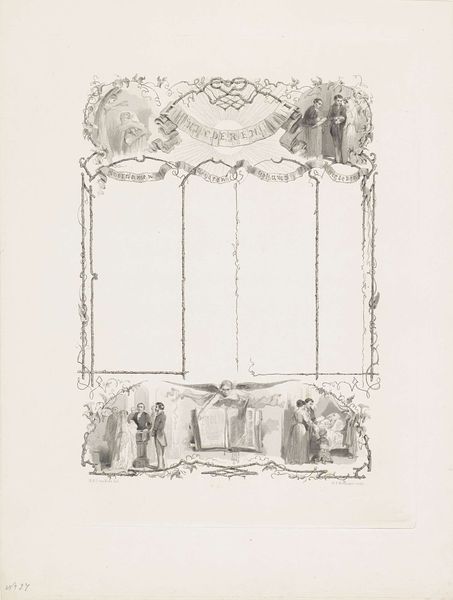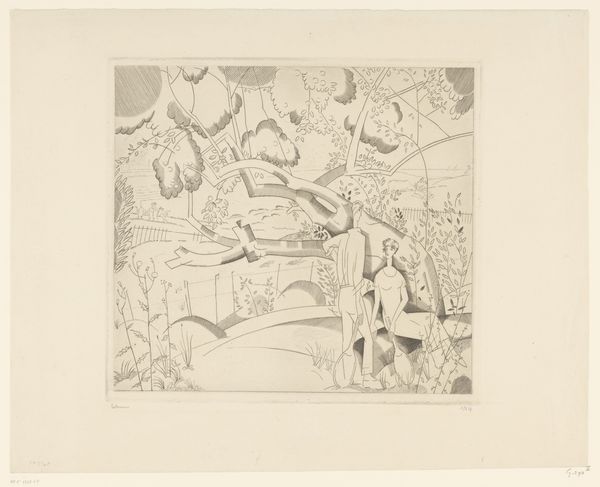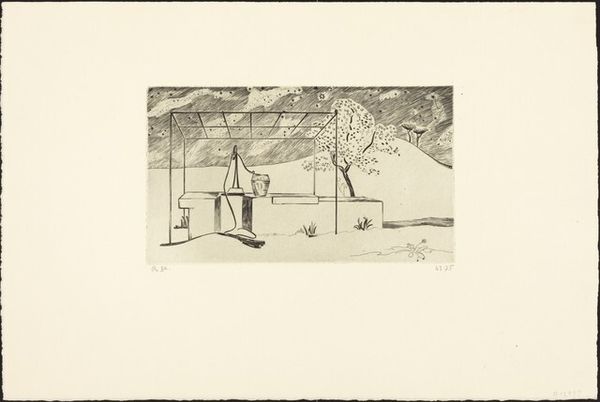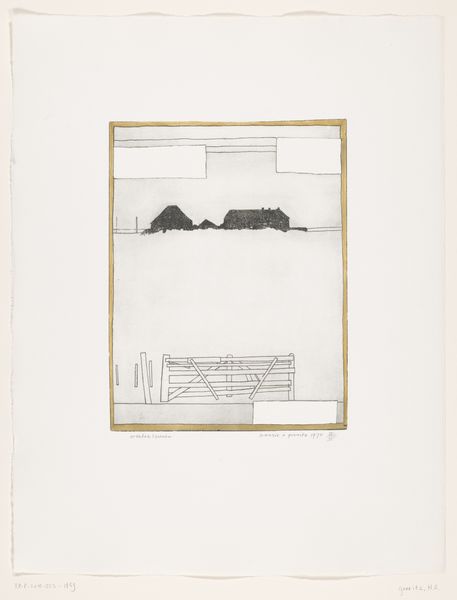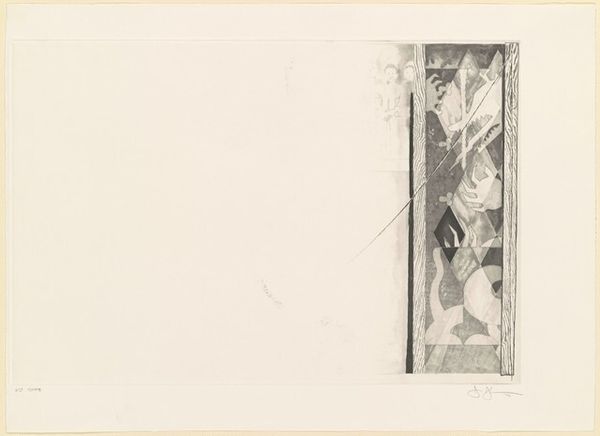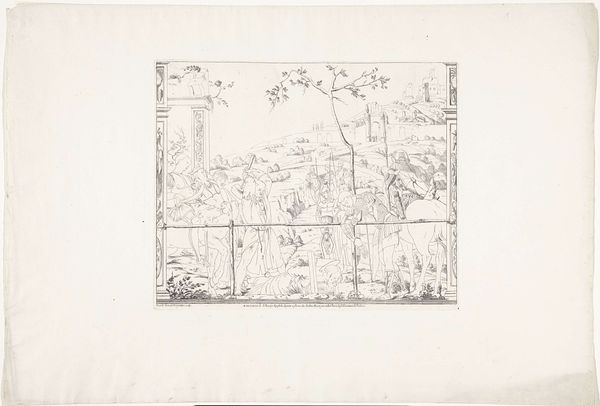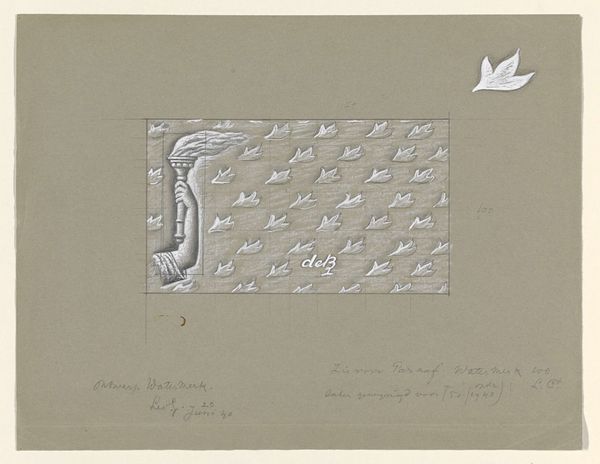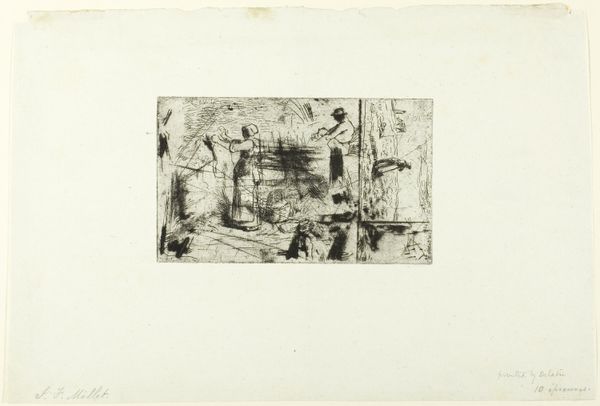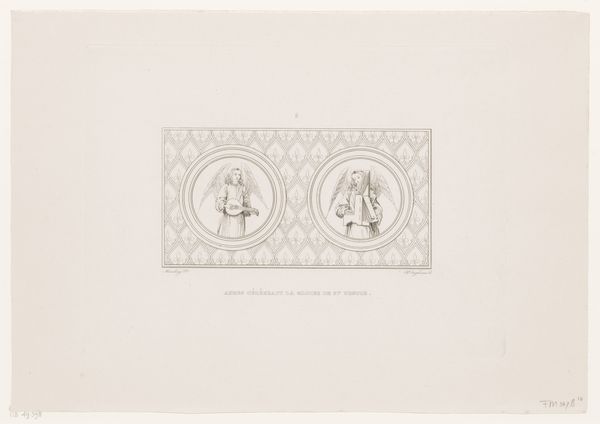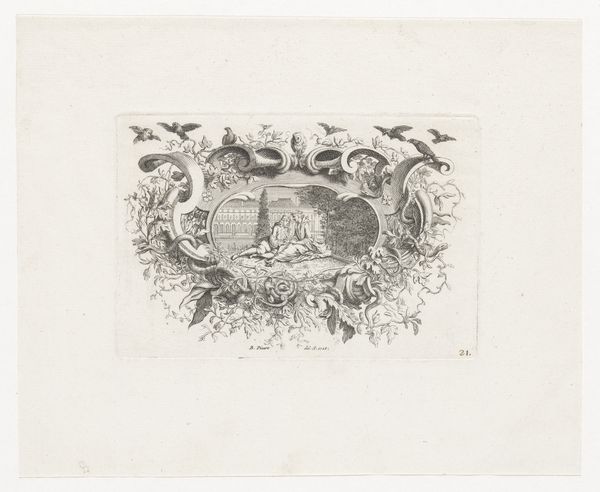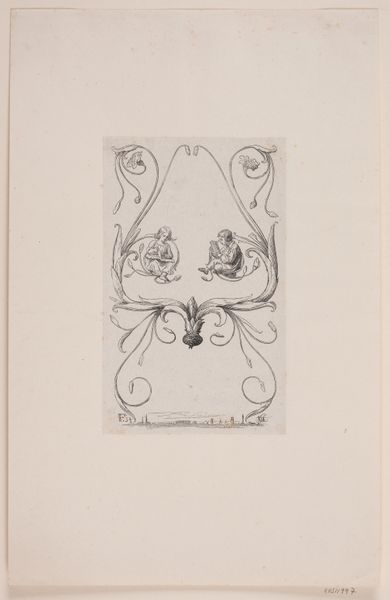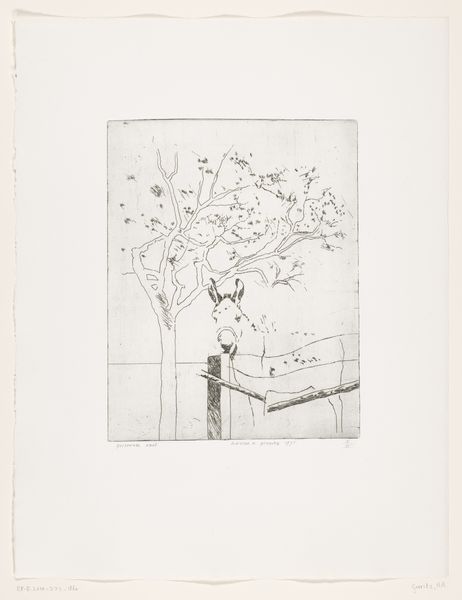
Dimensions: 4 3/8 x 9 1/4 in. (11.11 x 23.5 cm) (image)5 5/8 x 10 5/8 in. (14.29 x 26.99 cm) (plate)12 1/2 x 19 1/8 in. (31.75 x 48.58 cm) (sheet)19 x 23 x 1 1/2 in. (48.26 x 58.42 x 3.81 cm) (outer frame)
Copyright: No Copyright - United States
Editor: So this is Max Klinger's "Repose," from 1881. It's an intaglio print – etching and aquatint, specifically. It has this stark, almost theatrical feel… sort of sparse, yet decorative at the same time. What stands out to you? Curator: Immediately, I consider the laborious processes involved in etching and aquatint. The fine lines, the textures created by acid, these speak to a certain type of labor – painstaking, repetitive, almost obsessive. How does the starkness you mentioned interact with that intense production process in your eyes? Editor: Well, it's almost contradictory. All that work for such a sparse image. I wonder, what was the role of printmaking like this, making multiples, at this moment in German art? Curator: Precisely. Printmaking democratized art, shifting it away from unique, precious objects. Consider the burgeoning middle class – these prints were increasingly accessible. Does that impact how you view the subject matter, this "Repose?" Is it truly a scene of leisure or something more complex when it becomes reproducible, consumable? Editor: I hadn't really considered that aspect of distribution. I guess it complicates any straightforward reading of "repose" or leisure, knowing these prints could be bought and sold… turning a scene of quiet into a commodity. Curator: Exactly! The materiality and method challenge those higher/lower art boundaries. Editor: So much to consider beyond the initial image. This really challenges how I initially understood the work. Thanks. Curator: Indeed, seeing art through its production provides a more grounded experience.
Comments
No comments
Be the first to comment and join the conversation on the ultimate creative platform.

